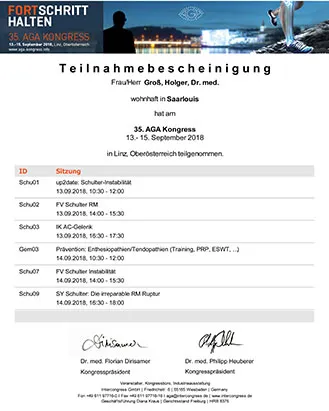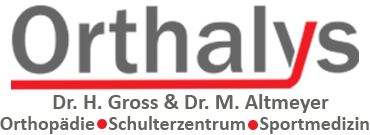
As every year, a variety of conferences and continuing education events take place after the summer holidays. A special highlight is certainly the AGA Congress. At the annual congress of the Society for Arthroscopy and Joint Surgery, the latest findings and therapies are always presented and, above all, discussed among experts. This year, the event took place in Linz, Upper Austria. Although the journey was somewhat arduous, my participation was rewarded with new knowledge.
New doesn't always mean better. However, this year, several things were discussed in the shoulder area that will influence my treatment decisions.
There is a great deal of knowledge available, particularly regarding instability following joint dislocation (joint dislocation). While in the past a simple MRI scan was often sufficient to make the diagnosis and determine the indication for surgery, today specialists recommend a much more differentiated approach. In addition to X-rays, a 3D CT scan is particularly useful in many cases in order to plan the correct surgical procedure. Why all this effort? In most hospitals, planning and decisions are only made based on MRI. The question is easy to answer. But the new studies show that the bony situation of the acetabulum and humeral head often determines the success or failure of a treatment. We want to minimize the risk of surgical failure and thus new dislocations.
Another notable piece of news is that hyaluronic acid has a positive effect on tendon healing. This has been assumed for some time, but now it's been proven. This, too, will change our treatment regimen. In the future, patients with tendon injuries, especially after shoulder surgery with tendon sutures, will also be able to choose this additional therapy.








